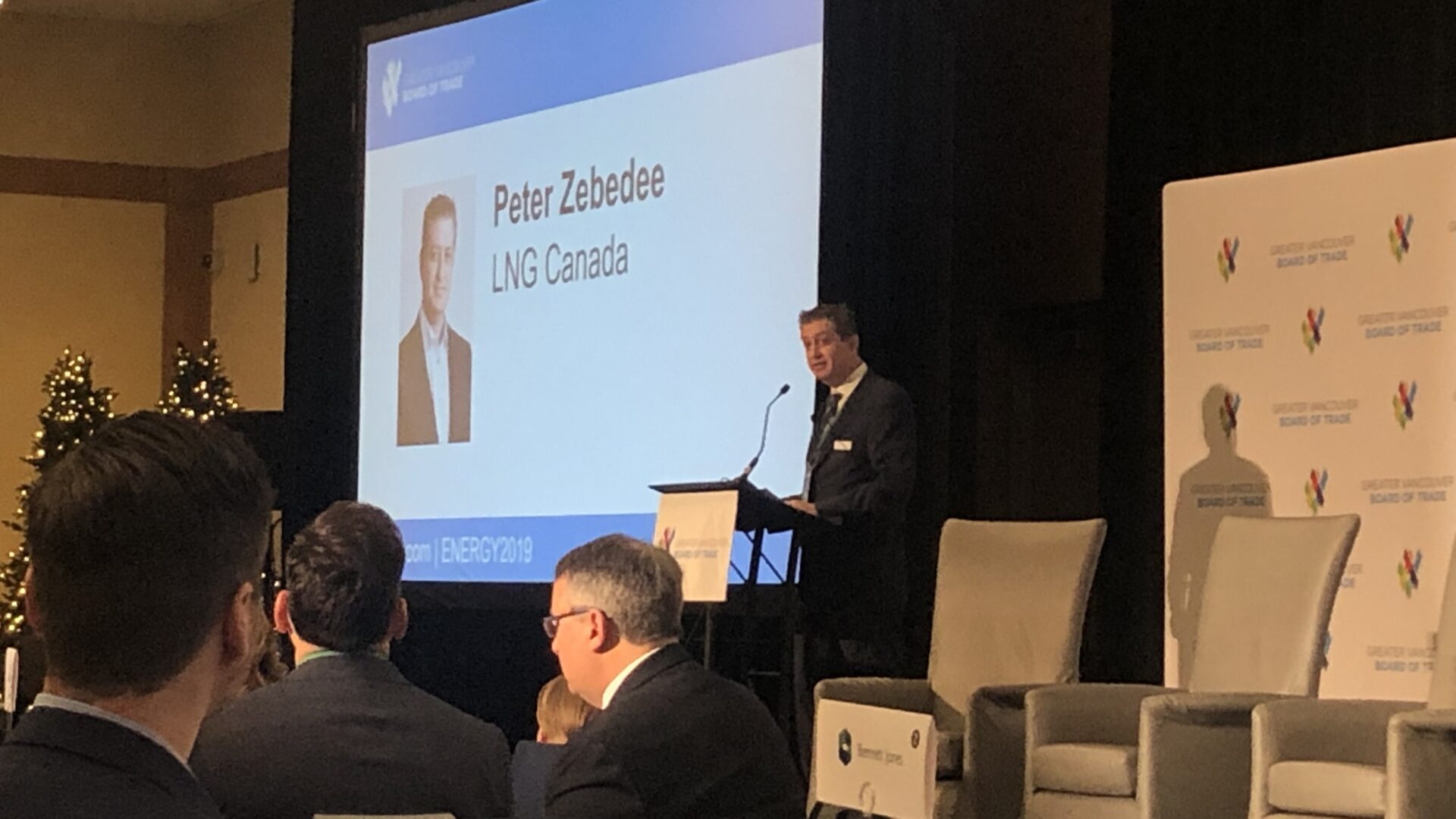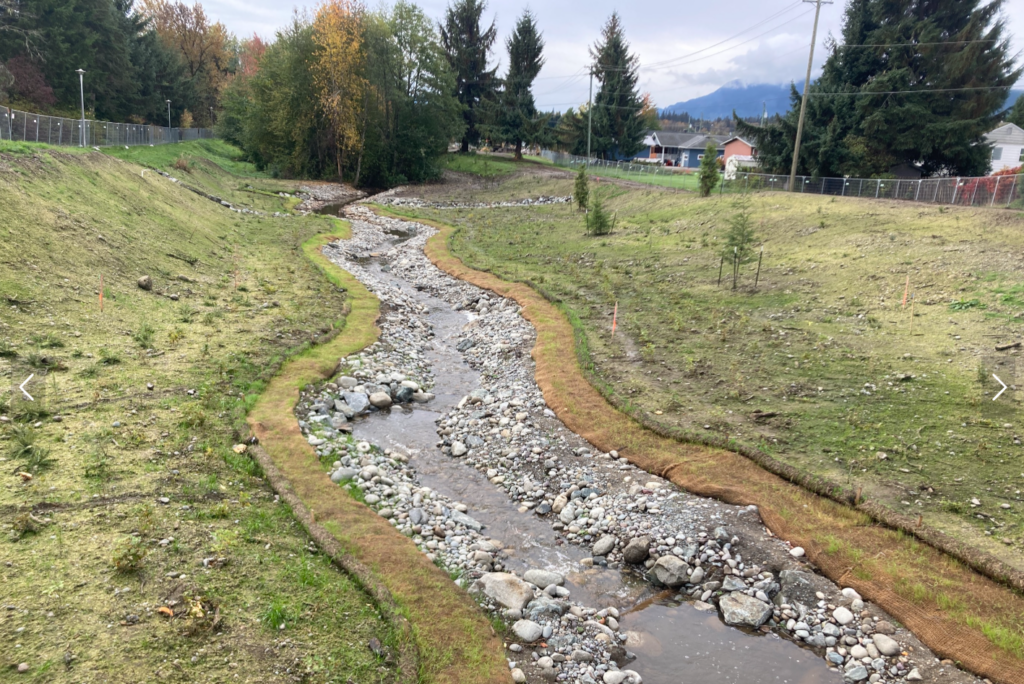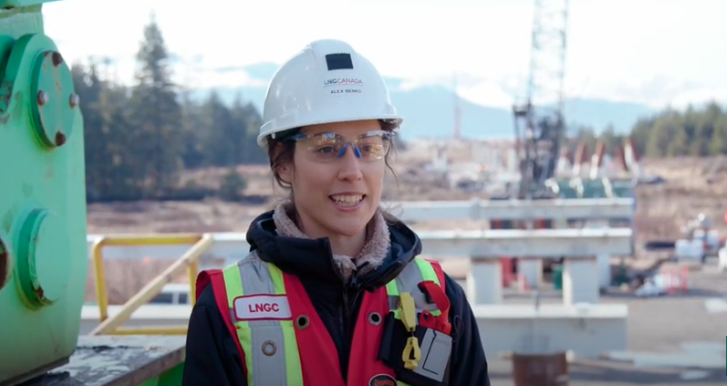Dec 13, 2019
The role of Canadian natural gas in the energy transition

Share
Presented at the Greater Vancouver Board of Trade Energy Forum in Vancouver, BC
Good morning and thank you for attending today’s Energy Forum hosted by the Greater Vancouver Board of Trade.
I’d like to begin by respectfully acknowledging we are gathered on the traditional territory of the Coast Salish peoples: the Squamish, Musqueam, and Tsleil-Waututh.
My name is Peter Zebedee and I am the CEO of LNG Canada.
I stepped into some very large shoes this past July, when my predecessor, Andy Calitz, stepped away from the project.
To say I have been drinking from the wide end of the fire hose would be an understatement.
As many of you know, LNG Canada represents the largest private sector investment in Canadian history.
We plan to be delivering gas before mid-next decade, and are now in our second year of construction.
If you visited our site in Kitimat, you’d see that we have made significant progress.
We’ve cleared the site where it needed to be cleared.
We’ve undertaken painstaking work to divert creeks and side channels to avoid impact on fish.
We even created new fish habitat – including some habitat that fish haven’t been able to access for almost 60 years.
We’ve started our second season of dredging to allow for the large LNG carriers to berth at our jetties.
We’re well into construction of the Cedar Valley Lodge – our workforce accommodation village that will be home to 4500 workers at the peak of construction.
To ensure our worker accommodation feels like home, we’ve outfitted the Lodge with his and her gyms…a movie theatre… a bar… dining rooms and healthcare services.
We’ve also paid particular attention to ensuring Cedar Valley Lodge is female-friendly and welcoming to a diverse workforce.
By spring, we’ll open the first 1500 beds.
The first time I visited the project site about seven months ago, what struck me most was just how mammoth the project really is.
The size of our project – at full build out we are permitted to export 28 mtpa of LNG annually – means we will single-handedly put Canada on the global map of LNG exporting countries.
Years ago, I declared that my aspiration was to “lead and guide the next generation of energy projects in Canada.”
I don’t think I could have asked for any job that fits that aspiration better than being CEO of LNG Canada.
There’s still some water in the fire hose, but the pressure’s decreased to a trickle, as I spend more and more time in our offices around the world.
These days, I live in Vancouver and I divide my time between
…our facility site in Kitimat…
…our Corporate Affairs office in Vancouver
…and our Project Directorate office in Calgary.
I‘ve also spent time in Houston where we have our marine and storage design office…
Yokohama, which hosts our plant design office…
…and I recently returned from a visit to the module fabrication yards in China.
Amongst all the travel, I ensure I am home for events like Hallowe’en to Trick or Treat with my kids…
…and recently, I had the opportunity to bring my 14-year old daughter to spend a day in our Vancouver office, as part of take your child to work day.
I think it’s important that the next generation understand the role that Canadian energy can, and is, playing in the transition to a lower carbon future.
I want my daughter, and my son who is a few years younger, to understand that a link exists between energy – or lack of energy – and poverty.
After my recent trip to China, I also want them to understand that many places in the world don’t have the abundant clean energy that British Columbia and Canada enjoy.
I especially want them to understand that BC natural gas has the potential to help reduce the air pollution that children just like them, are breathing every day in China.
It was heartbreaking to see kids walking the streets wearing face masks because of the thick, grey, heavy air.
Research estimates that 1.6 million people die each year in China from heart, lung and stroke problems because of polluted air.
The majority of these deaths are attributed to pollution from coal-fired power plants.
Of the 50 most polluted cities in the world, according to the World Health Organization, 24 of them are in China and 14 are in India.
I want my children to understand, that as Canadians living with an abundant supply of clean energy, we have an opportunity… in fact a duty, to share our resources with the rest of the world.
Clean Canadian Energy for the world
International trade of energy is a vital part of the Canadian economy
The largest market for our energy is the U.S., which accounts for 89% of the value of our exports.
But that market is shrinking…because U.S. gas production rose by more than 11 per cent last year… its highest growth rate in 68 years.
We need to seek new markets for BC and Canada’s abundant supply of cleaner burning natural gas.
We need to find markets that value cleaner burning sources of energy to displace coal and other higher-emitting sources of greenhouse gases.
The former executive director of the International Energy Agency spoke recently in Calgary. She said what many Canadians are shy about acknowledging.
Brand Canada Sells!
In her words, “We have a very good reputation to quite a few countries in Asia. For these countries, it will be important…not only where the gas comes from… what the price is… but how it is being produced.”
Her words are echoed in a survey by Global Energy Pulse. That report found Canada topped the list of natural gas producing nations, as the place people around the world preferred importing from.
We need to build the Brand Canada narrative further.
As Canadians, we hold a reputation as a Nation that comes to the aid of others.
Today, some of that aid needs to be delivered in the form of exporting cleaner burning BC natural gas.
According to the International Energy Association’s current forecasts, global demand for energy is expected to increase 27% by 2040, as economies in both developed and emerging countries continue to grow and standards of living improve.
The IEA says that coal-to-gas switching can offer “quick wins” for reducing global emissions.
Our BC advantage – 93% of our electrical power is hydro-based – makes for production of some of the cleanest LNG in the world.
Our own project will be better performing from an emissions standpoint than any large-scale project currently operating anywhere in the world.
Independent benchmarking studies show that LNG Canada will emit 50% fewer GHG emissions than the average facility… and 30% fewer than the best performing facility.
Our province has climate policies that position BC as a world leader in managing GHG emissions from the natural gas and LNG sectors.
These policies include:
…a $35 per tonne carbon tax on combustion emissions, which will increase to $50 per tonne by 2022
…a 45 per cent reduction in methane emissions from the oil and gas sector
…and a performance target for new LNG facilities that is world leading.
These policies do add cost and contribute to making B.C.’s natural gas and LNG sectors less globally competitive.
Natural Resources Canada thinks that “Our nation’s prosperity and competitiveness are tied to achieving sustainable economic growth and a successful transition to a lower carbon future.”
I could not agree more.
So, finding the right balance between climate policy and economic policy will ensure that significant opportunities, like the LNG investments being proposed in B.C., don’t go to other countries that have little or no GHG policy, which creates carbon leakage.
I believe both the federal and provincial government acknowledge that carbon leakage is not the solution to climate change.
Climate change needs to be addressed and natural gas can help
The Intergovernmental Panel on Climate Change Special Report on Global Warming – known to many as the IPCC report, emphasizes the need for transformative global actions and global cooperation to decarbonize our energy system.
The report states clearly: Regionalization of climate goals will only lead to carbon leakage.
The Panel identified lack of global cooperation as an important barrier to achieving a 1.5C or 2C global temperature reduction goal.
We’re fooling ourselves to think that BC and Canada achieving domestic climate targets, will be enough.
In the case of GHGs, we need to think and act both locally and globally.
Canada accounts for only 1.6% of all global emissions.
If we really want to make a difference, then we need to export our surplus natural gas to countries like China, India and other parts of Asia that have few alternative and affordable resources to back off coal for industrial process and heating.
China alone accounts for 30% of global GHGs.
Under their Paris commitment – they can grow their emissions to 2030 – and they will unless they can grow their economy and reduce emissions at the same time.
In the process of exporting our cleaner energy, BC and Canada can benefit from the jobs and economic activity that exporting LNG brings.
We can continue to show the world our leadership in sustainable energy development.
Exporting LNG provides employment and contracting opportunities for First Nations and local northern companies and communities.
LNG Canada has already spent 2 billion dollars in northern BC, across the rest of BC and Canada on contracting opportunities.
Exporting LNG provides training and jobs that will last young people a lifetime.
And it adds significantly to Government revenues.
LNG Canada, for example, will contribute approximately 120 million dollars a year in just carbon tax, once we begin operations.
Over the 40-year operating life of the project, that’s nearly 5 billion dollars.
Just think of what that money could provide if used for decarbonization at home, while we decarbonize Asian economies as well!
Looking back to look forward
I love the game of hockey. These days I’ve traded in my skates for watching my son play. So, it’s difficult to make it through a speech without making at least one hockey reference. And who better to quote than The Great One himself.
Gretzky said that he “skates to where the puck is going, not to where it’s been.”
As CEO of LNG Canada, my job is to lead our company to where the world is going.
To do that, I need to look back at where we’ve been and work with my colleagues to prepare for what lies ahead.
We achieved an FID because we understood the delicate balance between economic growth and supporting the transition to a lower carbon future.
We demonstrated the art of the possible by working closely with our stakeholders to ensure they had a say.
We worked together with First Nations, with local communities, with unions, with business and all levels of government.
We looked at our abundant natural gas resource and came up with a way, although more expensive, to produce it more sustainably.
We put environmental and social interests on equal footing with technical and commercial interests.
We acknowledged that our business success depended on finding ways to share value with local communities, with the province, and the country.
Well before UNDRIP was passed into law, we proactively acknowledged traditional rights and title in the absence of negotiated treaties.
We publicly stated our aspiration to be the Safest Project on Earth, and we are investing to make that aspiration come true.
We declared our future… to be a company of significance to all of Canada.
LNG Canada has always understood that “trust takes years to build… seconds to break… and forever to repair.”
We set our sights on being a company that is trusted and valued, understanding that “Trust is earned when actions meet words.”
At the moment, polling research shows that two-thirds of British Columbians support LNG development in our province. 16% oppose it and the rest just aren’t sure.
We can’t and don’t take that support for granted…
We have an opportunity today, with LNG, to make a substantial contribution to addressing a range of issues, from energy security, to reducing pollution, to addressing global climate change.
If ever there was a time for BC to leverage its low carbon-produced resources … it is now.
If ever there was a time to tell the Brand Canada story… it is now.
Theodore Roosevelt said that, “People don’t care how much you know, until they know how much you care.”
We need to find ways to create a dialogue between those that support energy development and those that are adamant that BC keep its resources in the ground.
We need to recognize there can be no energy development in BC, without the participation of First Nations.
The face of the workplace is changing, and we need to invest and remove barriers so we can start seeing the faces of women and Indigenous people in growing numbers on our construction sites.
Conclusion
Through the development and export of liquefied natural gas, British Columbia and Canada are poised to realize an opportunity that will provide both economic benefits for generations, and environmental benefits on a global scale.
LNG Canada represents a real opportunity to show the world that Canada is open to investment…
…that we have a talented, experienced and available workforce.
…that world-class projects can be delivered on time and on budget, while being competitive for their investors and sustainable for the planet.
We look forward to delivering on our promise: To bring opportunity to British Columbia and energy to the world.
Thank you.


